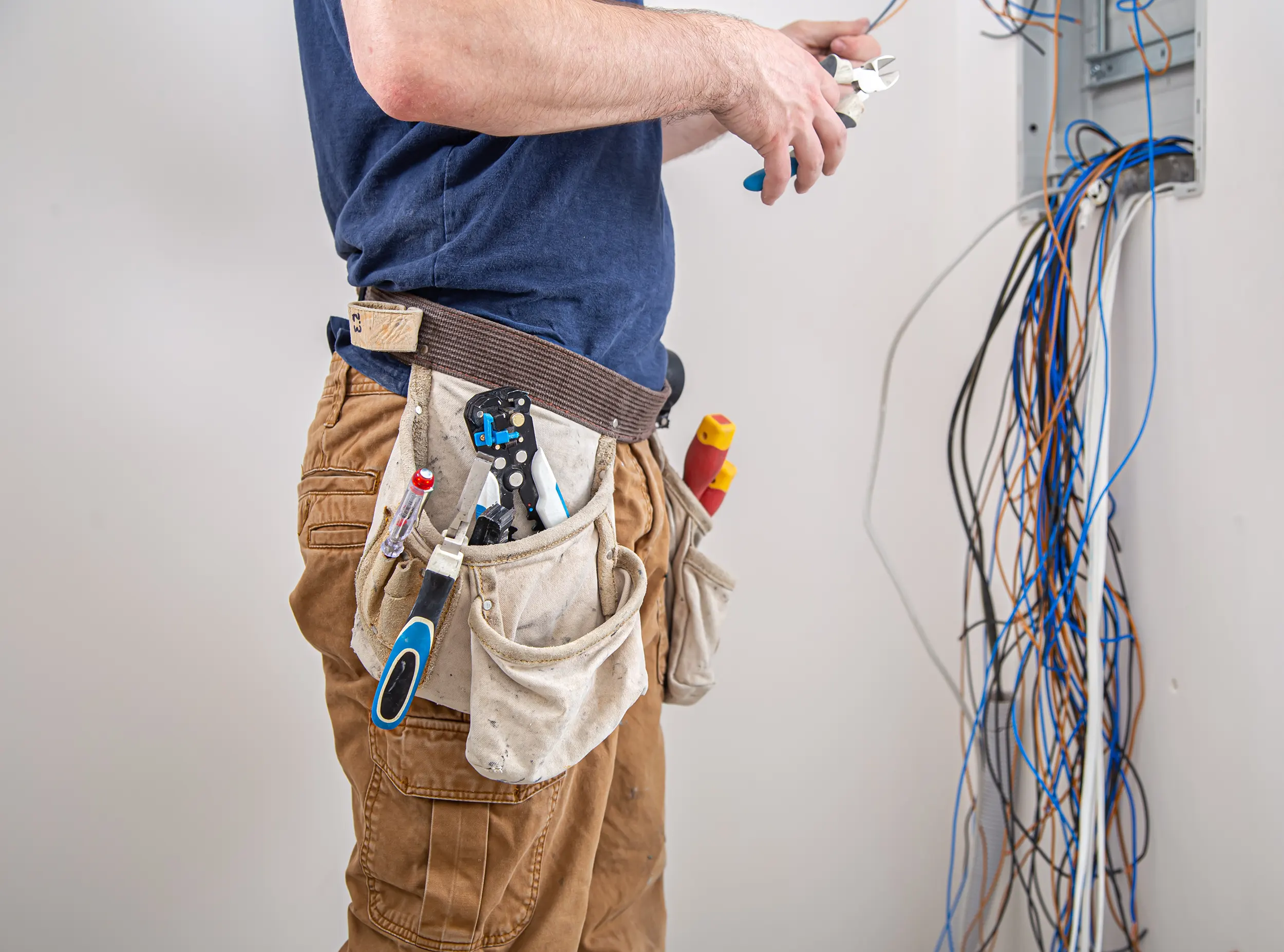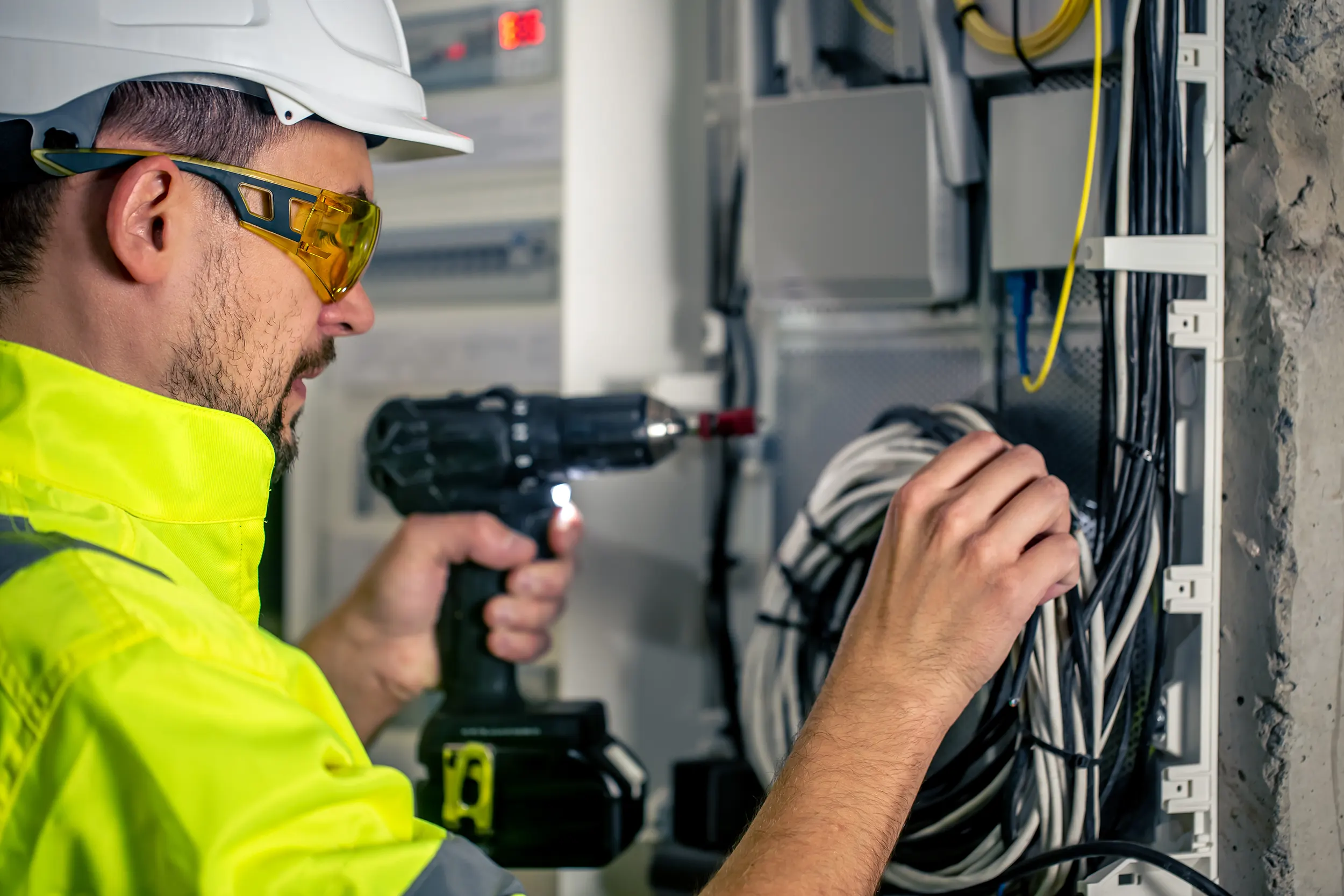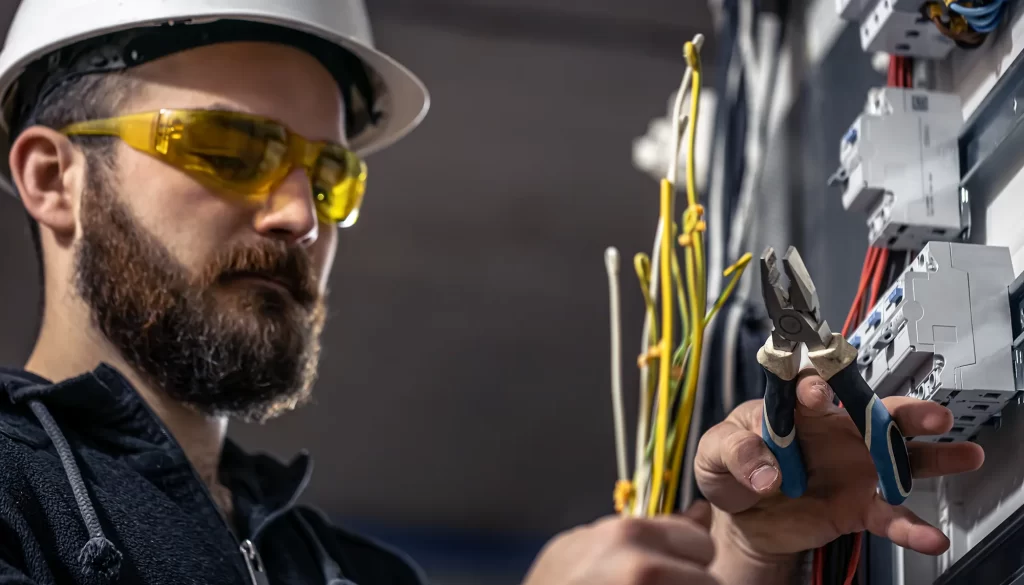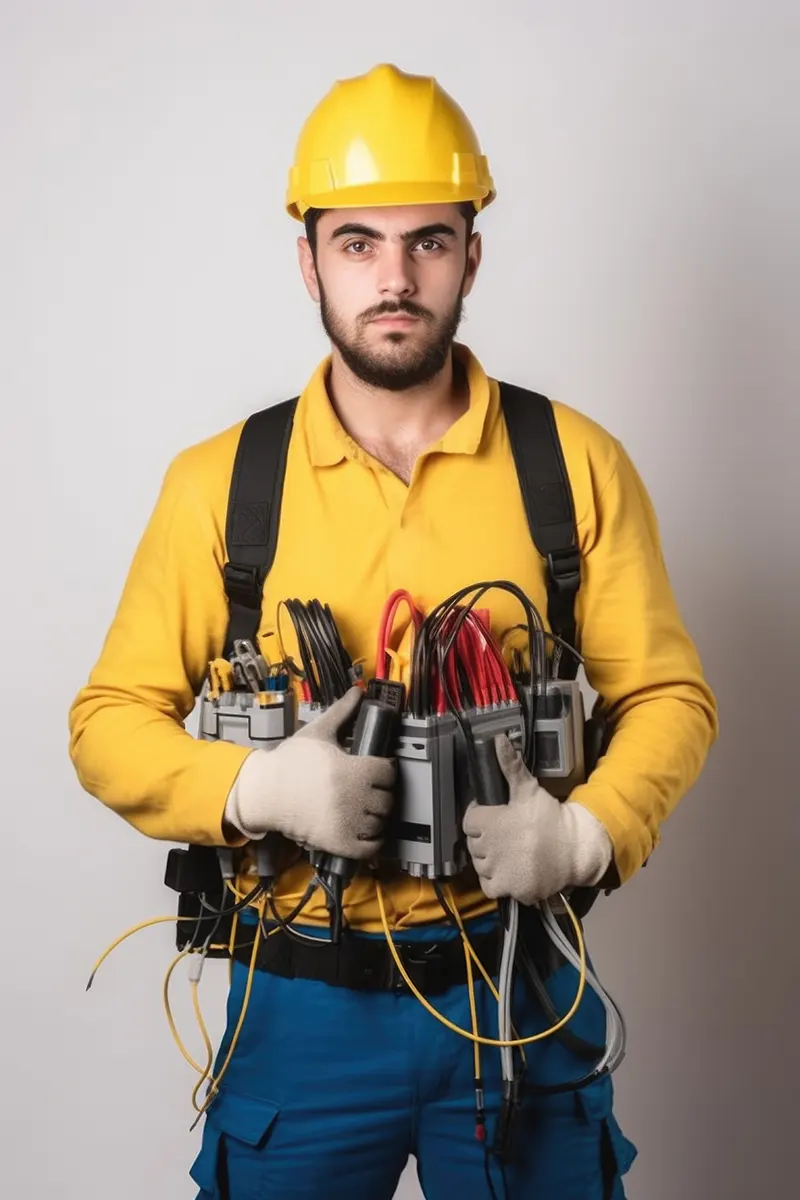ELECTRICAL WIRING & REWIRNG
- 25 Min super fast response
- 24/7 Electrical repair service
- Fully qualified & certified
- Competitive local rates
FREE No-Obligation Quotes Over The Phone.
Trust In Excellence
Certified experts, delivering excellence every single time.
24/7 Emergency Support
24/7 Emergency electrician, powering your peace of mind.
Satisfaction's Signature
Where every smile is a happy customer's story.




Expert Wiring Solutions
Discover unparalleled wiring solutions with Baharash Electrical Contractors, where we blend eight years of industry experience with the expertise of our certified electricians. Specializing in both residential and commercial projects, we prioritize your safety and satisfaction. Our team is adept in the latest technologies, ensuring efficient, state-of-the-art installations and maintenance services. From simple upgrades to complex electrical systems, our comprehensive services are delivered with precision, adhering to the highest safety standards. We pride ourselves on transparent pricing and a steadfast commitment to exceeding client expectations. Choose Baharash Electrical Contractors for reliable, top-tier electrical solutions that illuminate and secure your spaces. Your peace of mind is just a call away.
8+
Years Experience
Our Solution Process
Discovery
Comprehending your unique electrical requirements thoroughly.
Analysis
Evaluating specifics to identify optimal solution pathways.
Strategy Formation
Formulating action plans aligned with desired outcomes.
Implementation
Executing strategy with precision, delivering electrical excellence.

contact us now!
Reach out to us for all your electrical requirements. Whether you're facing a minor glitch or need comprehensive solutions, our team is here to assist. Benefit from our expertise and let us light up your world. Plus, our initial consultation is absolutely free. Don't hesitate; contact us today!

Free Consultation
electrical wiring colours uk

Red and Black Electrical Wiring Explained
A fuse box, also known as a consumer unit, is a critical component of any building’s electrical system. It serves as the central hub where the electrical current is distributed to various circuits within the property, protecting against overloads and potential electrical fires. There are several types of fuse boxes available, each designed to cater to different needs and requirements. Below, we explore the different types of fuse boxes and their unique features.
Black Wire:
Traditionally, the black wire has been used to denote a "hot" or "live" wire. In many systems, especially in North America, it carries current from the power source to the electrical device or outlet. It's essential to handle black wires with caution, as they are typically live and can pose a risk of electric shock.
Red Wire:
The red wire is also considered a "hot" or "live" wire, similar to the black. However, it's often used in certain types of switch legs, such as those connected to outlets or lights. Additionally, in multi-phase electrical systems or in direct current (DC) circuits, the red wire might serve as a secondary live wire.
Safety First:
When working with electrical systems, it's crucial to turn off the power source to avoid any potential hazards. If you're unsure about the wiring or its purpose, it's always best to consult with a professional electrician. Misidentifying or mishandling electrical wires can lead to dangerous situations, including electric shocks or fires.

A Guide to Electrical Wiring Diagram Symbols
Lines: Represent wires, with ‘dots’ indicating connections.
Switches: Broken lines with angled lines show different types of switches.
Resistors: Depicted as a zig-zag line, indicating resistance.
Grounds: Illustrated as lines forming a downward-pointing triangle.
Capacitors: Parallel lines with a gap between them, a curve denotes polarity.
Diodes: A triangle pointing to a line, showing the direction of current.
Transistors: Composed of three-layered lines or a circle with lines extending.
Relays: A rectangle with a diagonal line and a switch symbol.
Fuses: Rectangles, sometimes in a series, represent fuses.
Understanding these symbols is crucial for interpreting electrical diagrams, ensuring safety, and troubleshooting issues. However, professional electricians should handle complex or high-risk tasks.
Call us today for all your essential electrician work needs.
0730 756 0231
info@baharash.co.uk
Choosing NICEIC-Accredited Contractors
When it comes to ensuring the electrical safety of your property, it is crucial to choose NICEIC-accredited contractors for conducting EICR tests. The National Inspection Council for Electrical Installation Contracting (NICEIC) is a leading regulatory body that sets high standards for electrical contractors in the UK. By selecting NICEIC-approved professionals, you can have peace of mind knowing that your EICR test will be conducted by experienced and qualified individuals.
One of the main benefits of working with NICEIC-accredited contractors is their expertise in electrical installations. These professionals undergo rigorous training and assessments to become certified, ensuring they have a deep understanding of electrical systems and safety regulations. Their knowledge and experience enable them to identify potential issues during an EICR test accurately.
Moreover, choosing NICEIC-accredited contractors demonstrates your commitment to electrical safety and compliance. It shows that you prioritize the well-being of your tenants or occupants by investing in thorough inspections conducted by reputable professionals. This commitment can enhance your reputation as a responsible landlord or property owner.
Additionally, opting for NICEIC-approved contractors can also save you time and money in the long run. Their expertise allows them to efficiently conduct EICR tests, minimizing disruptions to your property. Furthermore, their comprehensive reports provide detailed information on any required corrective actions, allowing you to address potential issues promptly and prevent costly repairs or accidents down the line.

We are qualified


A Guide to Understanding Electrical Wiring at Home
The Service Entrance:
This is where the home's electrical supply originates from the power lines to your main electrical service panel. It's crucial that this area is robust and well-maintained to handle the electricity load required by your home.
The Electrical Service Panel:
Often located in basements or utility rooms, this panel is the hub of your home's electrical wiring. It distributes the main electrical supply into subsidiary circuits while providing a fuse or circuit breaker for each circuit in a common enclosure. Never attempt to open or tamper with the service panel as it can be extremely dangerous.
Circuits and Circuit Breakers:
Your home is served by multiple circuits controlled by a circuit breaker located in the service panel. Each circuit breaker is designed to 'trip' to protect the circuit from overheating by cutting off the power when the current flow gets too high.
Outlets and Switches:
Outlets provide access to the wiring system's electricity for various appliances and devices, while switches control the power to lights and other equipment.
Wiring Types:
Most homes have several types of wiring, including Non-Metallic (NM) cable (commonly known as Romex), armoured cable (or BX), and more. Each type of wiring has different levels of insulation and protection.
Colour Coding:
Understanding the colour coding of wires is crucial. Typically, black or red indicates a hot wire, white signifies a neutral wire, and green or bare indicates a ground wire. However, these can vary depending on your location and the type of system installed.
Safety First:
Always prioritize safety by turning off the power when replacing or repairing any electrical devices or wiring. Use a voltage tester to ensure wires are not live before touching them.
Professional Help:
While minor tasks like replacing a light switch can be done personally, more complex tasks involving new wiring, circuit breakers, or any uncertainty should be handled by a professional electrician.
Understanding your home's electrical system is beneficial, but handling electrical components can be risky. It's always best to consult or hire a professional electrician for significant installations, repairs, or when you're in doubt. They have the training, experience, and tools necessary to ensure the job is done safely and correctly.
Underfloor Heating

How is electric underfloor heating wired?
Discover the intricacies of the wiring process for electric underfloor heating in the detailed explanation below.
Layout Design:
Subfloor Preparation:
Laying the Mats:
Electrical Connection:
Thermostat Installation:
Final Connections:
FAQs
1. What are the different types of electrical wires used in homes?
In homes, the most common types of electrical wires are Non-Metallic (NM) cable, often referred to as Romex, and armoured cable, known as BX. There are also other types like THHN and UFB cables, each suited for specific applications.
2. What do the different colours of wires indicate?
In electrical wiring, colours are used for identification. Typically, black or red wires are 'hot' wires carrying current, white wires are 'neutral', and green or bare copper wires are 'ground' wires. However, these can vary based on regional standards.
3. Is it safe to do electrical wiring work by myself?
While minor tasks like changing a light switch can be done by yourself, it's important to have a basic understanding of electrical safety. For more complex tasks, it's recommended to hire a professional electrician to ensure safety and compliance with electrical codes.
4. How do I know if my home's electrical wiring needs an upgrade?
Signs that your home's electrical wiring might need an upgrade include frequent circuit breaker trips, flickering lights, burning smells from outlets, or the use of many extension cords. An older home with outdated wiring may also need an upgrade.
5. Can I use any type of wire for any electrical project?
No, different types of electrical projects require specific types of wires. Factors like the wire's gauge, insulation type, and whether it's for indoor or outdoor use play a role in determining the appropriate wire.


